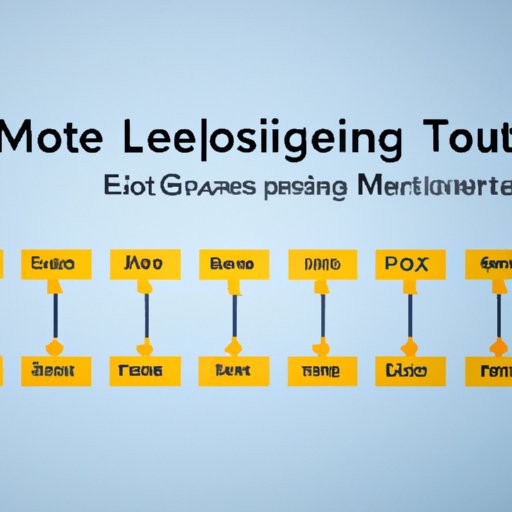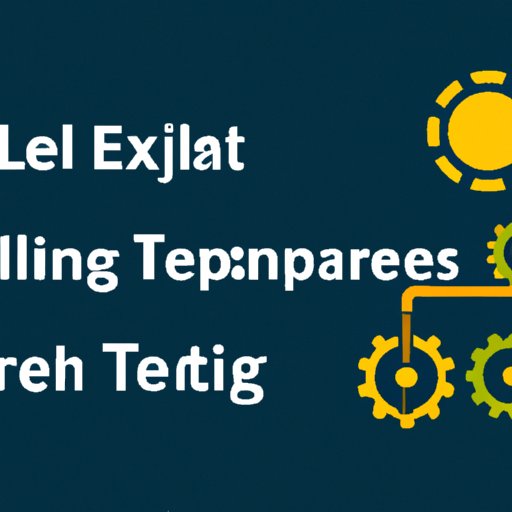Introduction
An ETL (Extract-Transform-Load) process is a standard method used to move data from one system to another. It is a crucial part of data warehousing and business intelligence solutions, allowing organizations to keep their data up-to-date and accurate. Automating the ETL process can help streamline the process, reduce manual errors, and improve overall efficiency. In this article, we’ll explore the steps to automate an ETL process, popular tools for automating ETL processes, how to monitor and troubleshoot an automated ETL system, best practices for creating automated ETL jobs, costs and benefits of automating ETL processes, and new technologies in automated ETL processes.

Steps to Automate an ETL Process
Automating an ETL process requires several steps. First, you must identify the data sources from which you want to extract data. Depending on the project, these sources could include databases, flat files, or third-party APIs. After the data sources have been identified, you must define the transformation rules. These rules will determine how the data should be transformed as it is loaded into the target system. Once the data sources and transformation rules are identified, you can begin extracting and loading the data. This step involves writing scripts or using an ETL tool to move the data from the source to the target system. Finally, you must schedule the ETL process. This ensures that the data is regularly updated and the target system remains up-to-date.
Popular Tools for Automating ETL Processes
There are several popular tools available for automating ETL processes. Talend is a powerful open-source ETL tool that allows users to easily manage data integration projects. It supports a wide variety of databases, file formats, and transformations, making it a great choice for complex data integration tasks. Informatica is another popular choice for automating ETL processes. It offers a comprehensive suite of data integration tools, including data cleansing, profiling, and replication. Apache Nifi is an open-source ETL tool designed for dataflow management. It is highly scalable and can handle large volumes of data with ease. All of these tools offer powerful features and are ideal for automating ETL processes.

How to Monitor and Troubleshoot an Automated ETL System
Once you have automated your ETL process, it’s important to set up performance monitoring and error logging. Performance monitoring allows you to check the health of your ETL system and identify any potential issues. Error logging allows you to quickly identify and address any errors that occur during the ETL process. Additionally, you should incorporate automation testing into your ETL process. Automation testing helps ensure that your ETL system is functioning properly and that data is being accurately extracted, transformed, and loaded.

Best Practices for Creating Automated ETL Jobs
When creating automated ETL jobs, it’s important to utilize standardization. Standardizing the ETL process helps ensure consistent results and reduces the risk of errors. Additionally, you should make use of documentation. Documenting the ETL process helps other users understand how the process works and makes it easier to troubleshoot any issues. Finally, incorporating version control into your ETL process is essential. Version control allows you to track changes to the process over time and quickly identify any issues that may arise.
Costs and Benefits of Automating ETL Processes
Automating ETL processes can provide several benefits, including cost savings, increased efficiency, and improved accuracy. Automating the ETL process eliminates the need for manual labor, reducing costs associated with the process. Additionally, automating the ETL process can significantly increase efficiency by allowing data to be moved faster and more accurately. Finally, automating the ETL process improves accuracy by eliminating human error from the equation. Automating the ETL process can also help ensure that data is always up-to-date and accurate.
New Technologies in Automated ETL Processes
New technologies are emerging that can further enhance the automation of ETL processes. Machine learning is becoming increasingly popular for automating ETL processes. Machine learning algorithms can be used to analyze data and identify patterns, allowing for more efficient data extraction and transformation. Additionally, cloud computing is becoming an increasingly popular choice for automating ETL processes. Cloud computing provides scalability and flexibility, allowing organizations to quickly scale their ETL processes as needed. Finally, big data analytics is increasingly being utilized to optimize ETL processes. Big data analytics can help organizations gain insights from the data they are extracting and transforming, allowing them to make better decisions.
Conclusion
Automating ETL processes can provide significant benefits, including cost savings, increased efficiency, and improved accuracy. There are several steps involved in automating an ETL process, including identifying data sources, defining transformation rules, extracting and loading the data, and scheduling the ETL process. Additionally, there are several popular tools available for automating ETL processes, such as Talend, Informatica, and Apache Nifi. It’s also important to set up performance monitoring and error logging, incorporate automation testing, and utilize best practices when creating automated ETL jobs. Finally, new technologies, such as machine learning, cloud computing, and big data analytics, are emerging that can further enhance the automation of ETL processes.
(Note: Is this article not meeting your expectations? Do you have knowledge or insights to share? Unlock new opportunities and expand your reach by joining our authors team. Click Registration to join us and share your expertise with our readers.)
